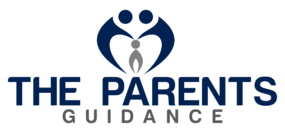Meta: Discover the top benefits of over-molding in manufacturing. Learn how this process enhances product design, functionality, and efficiency by combining different materials for superior performance and cost savings.
Over-molding, a manufacturing process where one material is molded onto an existing substrate, offers a myriad of advantages that can significantly enhance product performance, efficiency, and aesthetics.
Overmolding, a versatile manufacturing process, offers a multitude of advantages that can significantly enhance product design, functionality, and efficiency. By combining the strengths of different materials, this technique empowers manufacturers to create innovative and high-performance components.
What is Overmolding?
Over-molding is a manufacturing process where one material is molded onto an existing component or substrate. It’s essentially a two-step process that involves:
- Creating the substrate: This can be made from various materials like plastic, metal, or rubber.
- Injecting the overmold material: This is typically a polymer, such as thermoplastic or thermoset, which is melted and injected into a mold containing the substrate. The molten material encapsulates the substrate, creating a seamless bond between the two.
Enhanced Functionality
Material Combination: Over-molding allows for the integration of multiple materials into a single component. This enables the creation of products with diverse properties, such as soft-touch grips, electrical conductivity, or improved durability.
Improved Performance: By combining materials with complementary characteristics, over-molding can enhance product performance in various ways. For instance, a rubber over mold on a plastic handle can provide better grip and shock absorption.
Customization: The ability to combine different materials offers unparalleled customization options, allowing over-molding and die casting manufacturers in China to tailor products to specific needs and preferences.
Design Flexibility and Aesthetics
Complex Shapes: Over-molding excels in creating intricate and complex shapes that would be difficult or impossible to achieve with traditional manufacturing methods.
Improved Aesthetics: The process enables the creation of visually appealing products with diverse textures, colors, and finishes. Over-molding can add a premium look and feel to components.
Branding Opportunities: Unique designs and textures can be incorporated into the overmold to enhance brand identity and product differentiation.
Cost Efficiency and Time Savings
Reduced Assembly: By combining multiple components into a single piece, over-molding eliminates the need for separate assembly steps, reducing labor costs and increasing production efficiency.
Improved Product Quality: The integrated design of over-molded parts often results in higher product quality and reliability compared to assembled components.
Faster Time-to-Market: The streamlined production process can accelerate product development and launch, giving businesses a competitive edge.
Other Advantages
Weight Reduction: By optimizing material selection, over-molding can contribute to weight reduction, which is crucial in industries such as automotive and aerospace.
Environmental Benefits: Over-molding can reduce waste by eliminating the need for multiple components and assembly processes.
Versatility: The process can be applied to a wide range of industries and products, offering versatility and adaptability.
Industries Benefiting from Over-Molding
Over-molding has found applications in numerous industries, including:
Automotive: Steering wheels, gear shifters, door handles, and other interior components.
Consumer Electronics: Mobile phone cases, gaming controllers, and electronic device housings.
Medical Devices: Syringes, medical instruments, and diagnostic equipment.
Sports and Fitness: Grips, handles, and protective gear.
Industrial Applications: Tool handles, electrical connectors, and automotive components.
By leveraging the benefits of over-molding, manufacturers can create innovative and high-quality products that meet the evolving demands of consumers and industries alike.
In Conclusion:
Over-molding emerges as a powerful manufacturing technique that offers a multitude of benefits for enhancing product design, functionality, and efficiency. By seamlessly combining different materials, this process unlocks opportunities for innovation, cost reduction, and improved product performance. From enhanced aesthetics and ergonomics to increased durability and reduced assembly time, over-molding proves to be a valuable asset for industries seeking to create superior products that meet the demands of today’s market.
By carefully considering the specific requirements of a project, manufacturers can harness the full potential of over-molding to achieve exceptional results.
Read Also:

